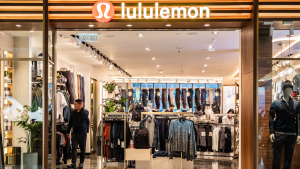
Keeping an eye on what Barclays and other large investment banking firms can provide insights into a stock’s market position. These price targets, like any other financial analysis, are predictions that cannot account for the human factors of a corporation, such as quality control, leadership, and productivity. Looking for stocks with lowered price targets helps determine if you’re buying a stock at the right time.
The saying goes “Buy low, sell high,” making it unwise to buy when analysts say a stock will trend lower. Bearing this in mind, it’s also important to research whether the stock will decline further. Sometimes, both decreases and increases in price targets can be conservative estimates based on broader market trends than what can be accurately predicted.
Victoria’s Secret (VSCO)

Known for its sizeable chunk of the premium women’s underwear market, Victoria’s Secret (NASDAQ:VSCO) stock pricing can be difficult to pin down. On one hand, the company is hardly innovative, while on the other, it is a staple of women’s clothing. So why then did Barclays put it amongst its stocks with lowered price targets?
The likely answer is the trend of American consumers spending less in the retail sector which has affected the profit margins of nearly all non-essential retail stores. While VSCO underwear undoubtedly sells well, its pricing has only increased over the years while offering the same standards of comfort and quality. To its credit, VSCO has worked hard to establish a more inclusive brand image, offering a variety of underwear styles.
However, since 2019, many shoppers have viewed VSCO’s products as overpriced or too expensive to justify. Fast forward to 2024 and the reality is the same with now inflation eating into consumers’ wallets. Thus, it makes sense why Barclays is estimating this stock’s price will drop.
Ulta Beauty (ULTA)

Barclays recently lowered its price target for Ulta Beauty (NASDAQ:ULTA) from a high-value estimate of $612 to $434 a share. This means the banking giant still sees a 9.4% upside for ULTA, but not to the extent previously expected. While constricted consumer spending is also likely part of this prediction, ULTA’s plans to expand its stores across the U.S. and into Mexico could factor in as well.
After all, expansion projects for any company cut into free cash flow in the short term and limit ability to store cash reserves. With expenditures on the horizon, ULTA’s next earnings report on May 30 might show thinner profit margins, which could impact short-term trading prices.
Nevertheless, don’t bet against ULTA in the long run, as it has consistently delivered revenue growth even during times of inflation. Moreover, because the brand is not seen as a super-premium or luxury boutique, but rather a general beauty products store, it can adjust its offerings to fit a broad spectrum of spending categories.
Lululemon Athletica (LULU)

Speaking of super-premium branding, Lululemon Athletica (NASDAQ:LULU) has also fallen into Barclays’ bin of stocks with lowered price targets. With its original predicted price of $546 per share now down to $395, it seems like inflation is catching up to LULU’s prospects as well. Much like VSCO, Lululemon has been able to charge premium prices for simple products like leggings due to extensive brand recognition and celebrity endorsement.
This ultimately created a devoted following of consumers who believe a $130 pair of workout pants is worth it. However, as individual spending power decreases and necessities like food and housing go up in price, the hype around workout clothes starts to feel irrelevant. While the company saw strong revenue growth in Q4 2023, coming in at 16% year-over-year, that trend will likely slow in the coming months.
Perhaps those long-awaited interest rate cuts will abate a consumer spending slowdown, but for now, money is getting scarcer for the U.S. middle class.
On the date of publication, Viktor Zarev did not have (either directly or indirectly) any positions in the securities mentioned in this article. The opinions expressed in this article are those of the writer, subject to the InvestorPlace.com Publishing Guidelines.





